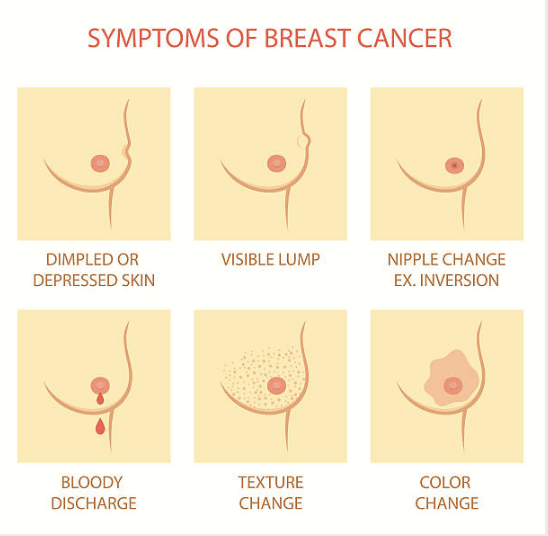Breast Cancer; Early Detection
- Published: Monday, August 7th 2023
- in Health
Breast cancer is one of the most common cancers in women. It can start in the milk-producing glands of the breast, and often it’s not even felt.
The best way to detect breast cancer is through screening mammograms and self-exams. The American Cancer Society recommends that all women 40 and older get a mammogram at least once every year. Women at high risk for breast cancer should talk with their doctors about getting an MRI instead of a mammogram.
Early Detection
Breast ultrasound. A machine that uses sound waves to make pictures, called sonograms, of areas inside the breast.
Diagnostic mammogram. If you have a problem in your breast, such as lumps, or if an area of the breast looks abnormal on a screening mammogram, doctors may have you get a diagnostic mammogram. This is a more detailed X-ray of the breast.
Breast magnetic resonance imaging (MRI). A kind of body scan that uses a magnet linked to a computer. The MRI scan will make detailed pictures of areas inside the breast.
Biopsy. This is a test that removes tissue or fluid from the breast. Further examined under a microscope, additional testing is conducted. There are different kinds of biopsies (for example, fine-needle aspiration, core biopsy, or open biopsy).
Unfortunately, most breast cancer cases are still detected by chance by a doctor examination or when a woman notices an odd lump in her breasts. If you have any symptoms that worry you, make an appointment with your provider as soon as possible so that your doctor can examine you and do tests if necessary.

Breast cancer is a disease that affects women and men of all ages.
Each year, more than 200,000 new cases are diagnosed by the American Cancer Society. The most common symptom of breast cancer is a lump or thickening in the breast or underarm area. But other symptoms can include:
New fullness or swelling in the breast or underarm area
A change in the size or shape of your breast (or someone else’s)
Skin irritation or dimpling on the skin of your breast
Nipple discharge (other than breast milk) that comes from only one nipple
A change in how your nipple looks or feels
Demand Medical Review
As always, if you detect any anomaly, visit the doctor for guidance. Seek a second opinion, if you are not satisfied with the response.



